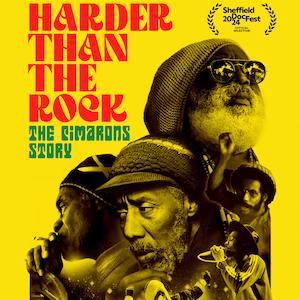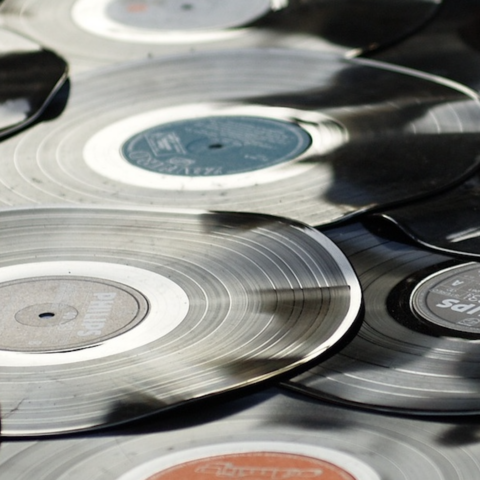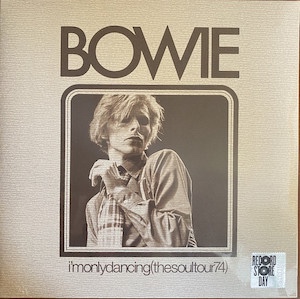WATER: Hydraulophone, H20 as a musical instrument
By Jo Phillips
In this month’s theme of WATER, we have already seen how water is interpreted in the artistic mediums of album covers and film storylines, what if water wasn’t the subject but the tool for creativity, that can be manipulated and give the user control over it’s natural properties; in this case a musical instrument. This gives the freedom of water and human interaction on a physical level. Touching our several senses; to be seen, felt and heard, rather than just mentally studied.
The idea of a water instrument is surprisingly new, when you consider the fact that instruments already depend on the other two states of matter: gas (wind instruments) and solid (percussion, strings). It took a while for music technicians to question the nonexistence of this category of music. There’s no doubt that you would have seen glass harps performed in the street, in which a performer moves their hands of wine glasses filled with various degrees of water. However this instrument – that dates back to the 18th century- is also reliant on the interaction of the glass and air, and not solely on the water. Therefore the first instrument that should be credited for being a water instrument and exclusively can make music with just that substance alone is the hydraulophone. In this article, we get to know the hydraulophone as if it was a interviewed person to give you an entertaining insight into it’s lifestyle, friendly character and place in the world of music, as well as personifying it’s playfulness. Finally water has a voice in the orchestra!
1) Why are you called a hydraulophone, it doesn’t immediately spring water to mind (no pun intended)?
The “phone” part of my name is obvious because it’s Greek for “sound” and exists as a suffix in other instruments such as the xylophone or the marxophone. The “hydraulo” part is quite technical. It comes from the study of liquids and how they move through pipes and channels, what scientists called “hydraulics.” It’s a very suitable word for the mechanical side of the instrument, even if it doesn’t sound inform the public of it’s playing method.
2) Who invented you and when were you born?
My creator is Canadian inventor Steve Mann, who is Toronto based and could be a seen as a mad professor. He has created other fascinating forms of technology because he has an obsession with breaking rules in an inter-disciplinary manner – encouraged by his studies at the innovative Massachusetts Institute of Technology – and connecting art, science and play together. His other works of beauty (and pun titled-brands) range from the fields of surveillance (Veillance Wand, Veillance games, Veillometer, Surveillicopter), fitness (The MannFit Board, The MannFit System) and ophthalmology (Ayinometer). He also created other musical instruments such as the Andantephone, which creates music just by walking on it’s surface and a hyperacoustic instrument called Scratch Input. He is particularly proud of me because I have evolved over time, been a successful investment and reach a wide of audience of friends. I was born in the mid-eighties but I wasn’t as user-friendly as I am now.
3) Are there differences species of hydraulophone, like there’s members of the violin family, guitars and saxophones?
Us hydraulophones come in different shapes, sizes and colours. That’s one of our benefits. As long as the water is the source of the sound and there’s holes, it’s a hydraulophone. The most commonly seen type of hydraulophone or “normal” type – if you Google search us is the”underwater pipe organ” – but there’s also the “clarinessie”, “WaterHammer”, “H20 Oboe”, “Water flutes” and a lightweight race just for kids called the “Nessie”. It’s shaped like the Loch Ness monster, when a lot of us look like giant tadpoles or small whales.
4) Does this mean you each have your own accent?
If you hear us sing, we have a very distinctive voice anyway. Even the way you play is so limitless and versatile that you always find new sounds. Although different versions of us mimic more specific instruments like the organ and flute, we generally have a whistling, high pitched soft folk sound sounding like it’s from a train travelling from another universe. Although it’s best to hear us in action. It has been described in the past as “feminine”, according to an interview with our creator for the Water Shapes website and “water aliens” in the same article.
5) How can we play you?
We are so easy to play. We are just a pipe with holes that bend around in a shape that’s beneficial for the player. You don’t need a music degree, a history of performing skills or certain suitable physical attributes (double bass, cello) to even play one note. Although it helps to know chords and technical terms to master our full potential, it’s more stress-free than playing certain conversational instruments like the guitar or the piano. Yet we have more flexibility than maracas or a triangle. Water sprays out of 12 holes (known as mouths) in our park installation form and 48 mouths in a concert version. To play notes, you block our water jets with your three middle fingers to stop the water from spraying out. What’s very clever is that depending on how much you block our holes – whether it’s a complete cover, a half cover or slanted movement- you have a different sound. You know when you’re trying something extravagant when you see our water spray in an unorthodox manner. This links back to the idea that the musical results of our design are endless and that it will make harmonies – if performed in a sequence – that no other instrument will make. In the beginning of our existence we were difficult to play because you needed the right pressure and force to even make a note – which would in turn cause a strain on our players’ fingers – but after improvements anybody can play us whether your body is strong or weak.
You can get a slice of tuition by going to Wear Cam (http://wearcam.org/oscfuntain/southnessie_lesson_twinkle/), a place that will teach you in great detail how to play Twinkle Twinkle Little Star; your first step towards mastering our capabilities.
6) Where can I visit you or your kind?
One of the purposes of our existence is to be a social and interactive instrument, accessible for everyone of all ages and particularly welcomed by unlucky souls that don’t own instrument. Therefore we are seen in parks, retirement homes, educational institutes, medical centres (Canadian Institute For The Blind), college campuses, museums in Copenhagen and Chicago and waterparks. You can even see us at a LEGO theme park in California; at the entrance in the shape of LEGO block because we have a children’s market as well as an adult demographic. However our most famous home is at the Ontario Science Center, where we exist in our largest form. We are particularly famous in Canada. Our creator Steve Mann told Water Shapes website that he believes that the hydraulophone could be placed in any outside establishment that had a large congregation or community. Unlike many unique installations, on every occasion you are allowed to play with us for free. Unfortunately, we haven’t visit the UK yet.
7) Are you performed professionally at gigs or in concert halls?
Yes. Although we are a source of fun and well-being, we also socialize in indie and sophisticated circles. A professional musician who plays the hydraulophone is called a hydraulist. When you consider the fact that the major scene for our design is in Canada – known stereotypically for it’s cold weather- it makes sense that hydraulists perform in hot tubs that are adapted to mimic hydraulophones. The hot tubs keep the performer warm whilst the water that sprays out is diverted away from the audience into the water cycle of the tub. In this case, we are given a special name called a balnaphone. We love our Greek names and Balnea translates as “bath”. Unlike woodwind instruments with holes, our mouths are covered with a player’s hands, thus leaving their embouchure free for singing.
A quick search on YouTube on hydraulophone performance and you’ll come across a pattern of performers covering The Animals’ House of The Rising Sun but believe or not, we have our own original pieces, just like any traditional orchestra instrument. Our creator Steve Mann has composed pieces specifically for us. The first composition goes way back to the time when Mann had the idea in the first place. He was inspired by the surprisingly melodic sound of liquid nitrogen filling a building from a truck, as it spied on a nearby building. Therefore his first and favourite piece of hydraulophone music is called “Liquid Nitrogen” and tried to capture exactly what he heard that day.
8) Who is your most famous performer?
Back in spring 2007, the hydraulophone was introduced to a classical audience by Ryan Janzen (https://www.youtube.com/watch?v=tnJb9WyhCUc), performing in the Great Hall in Toronto with Hart House symphonic band; a band that began to shape around us after it’s 12th year of formation. This was a groundbreaking concert for another reason, it combined the three matters of solid, liquid and gas in a public music performance for the first time ever. The composition was called “Suite For Hydraulophone Movement II” and was broadcasted live on a webcast. Composer and engineering researcher Ryan Janzen has since become a pioneer of this instrument, concocting more arrangements (“Changing Spirit of an Oxbow Lake”, “Evershadow”, “Sketch For Two Pencils”) taking Steve Mann’s design and doing his best to embrace it to the world. He’s not as famous as Louis Armstrong, Vanessa Mae or The Edge but he’s achieved a lot already as he has traveled with us to Copenhagen and New York, along with shows in Canadian cities Montreal and Toronto.
Janzen has a fascination with the combination of science, nature and music – which we are – and was attracted our expressive nature and interesting mix of our sounds, according to a 2012 interview by Nikola Danaylov (https://www.youtube.com/watch?v=7XybZcuqYyA). Although he had already written for pipe organ and the aforementioned walking-instrument the adantephone. He is a spokesman for art, science and technology on various media such as newspapers, magazines and television.
9) What makes you unique?
Where do I begin? On a basic mission level, as a modern piece of innovation, we aim to correct the faults of traditional instruments. We have already covered the fact we are user-friendly and stress-free unlike guitars and pianos. We can be played by anybody of all ages, not matter your technical skill, health or age. We invite interaction and can be performed by many people simultaneously in a friendly environment. However we go even deeper than that.
Not only are we the first water-dependent instrument, we are also the first music device to have a polyphonic embouchure; which means we are operated by the covering of our holes yet the human mouth is free. It sounds technically boring but it’s the first of it’s kind.
If we had an anthropomorphic personality we would be the most kind and charitable as our instruments are not only used for musical expression but they have their health and therapeutic benefits. The Canadian National Institute For The Blind (CNIB) has adopted the instruments in the outdoor classrooms because not only do we contain braille inscripted on our designs but because our water fountains give them a sensory experience; the intense rush of the water and the beauty of the music being controlled by them helps with the disadvantages of vision loss. For the more fortunate, we are one of the few instruments in which you can hear the notes, feel the notes and see the notes as the water pours in different directions.We also inhabit cancer and rehabilitation centres, spas and old people’s homes because we help with arthritis.
We are an educational tool to help increase the intelligence (creative and logical) of children in an non-intimidating manner, camouflaged as fun. One of our creator’s missions was to combine work with play and take away it’s boundaries, this has certainly been achieved. Most children playing with water, therefore we already have that appeal but at the same time parents are encouraged by us because we help them learn about the organization of musical sounds, how to create them and mnemonic thinking. This learning experience can be beneficial in life not just in music. Adults can get involved because there’s a level of sophistication to music playing as oppose to just throwing yourself on a water fountain.
10) Where can I purchase you?
I guess the slight downfall with hydraulophones is that they are not easy to buy, you are a long way from seeing us in the impulse buys section of Tesco. Yet when you consider the plumbing that has to be involved and the mess it can make to your carpet, that’s a wonder why you’d you want to have one of us in your house anyway. The fact that we are built and installed for social and outdoor purposes for maximum exposure, kind of excuses this hindrance for now. Nevertheless, White Water West and Crystal Fountains are two websites where we might be found. Crystal Fountains is a product manufacturing firm based in Ontario that used to sell us but having a peak at it’s websites, it’s uncertain if this is the case. White Water West is a waterpark company that calls us an AquaTune and specifically markets this at kids. In it’s product description, it adds that it’s available in various colours, has gentle jets and has an adjustable music volume. How to buy one is still clear. Therefore with all the friendly and accessible connotations of our design, there’s an enigma that could keep it in the shadows and away for worldwide fame a little longer, unless it gets an impressive word-of-mouth campaign going.
Watch in it action. Charlotte Mundy & Ryan Janzen “Une Jeune Pucelle”: https://www.youtube.com/watch?v=VZ8UYgHaEtM













